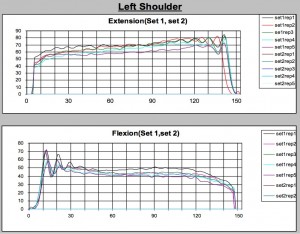Cost Reduction Technology’s Solution to Musculoskeletal Disorder Injuries in the Construction Industry
Editor’s note: The information contained in this article is a demonstration of the efforts the CFA is putting forward toward the development of a revolutionary risk management program to assist companies in qualifying for and taking the greatest advantage of the Insurance Captive forming for this industry. After a successful introduction to this company during the 2006 CFA Annual Convention in Wisconsin, CRT has continued to strengthen their network and support for a broad spectrum of industries. They are first and foremost an employer advocate and may be a strong opportunity for your company. This article is the first in a series of articles planned to begin introducing risk management components to the industry, the future of our focus on risk management.
It is no surprise that the construction industry has experienced more than a two-fold increase in the average number of days away from work, days of restricted duty or job transfer than that of all industry sectors combined according to the Bureau of Labor Statistics’ 2011 injury data. Construction work is tough and there is no simple means of engineering out the risk of injury, especially from musculoskeletal disorders known as MSD’s, through typical ergonomic solutions of redesigning the workplace to safely fit the worker. Cost Reduction Technology’s Solution to Musculoskeletal Disorder Injuries in the Construction Industry Technology, however, is not letting the construction industry down. It is not only possible, but quickly becoming mainstream, to counter the difficulties of ergonomic intervention with matching the worker to the physical demands of the job itself. It’s fundamentally easy, immediate, precise, predictive, safe, and above all else, it’s legal!
Over the past four decades, scientists and clinicians have been evaluating various technologies to measure human function and apply those measurements as predictors of future strain and sprain injury on the job. The one technology that has risen above the rest due to its safety, validity, and predictability is called “Isokinetics”. Isokinetics measures the maximum force that can be generated by various body joints such as the torso, knees and shoulders, along their entire ranges of motion. This data is then compiled and combined into a single numerical record of the applicant or employee’s overall ability to perform physically demanding work. The single numerical score, or Body Index Score, corresponds to the U.S. Department of Labor’s recognized strength classifications that range from sedentary to very heavy. Research supports this technology through outcome studies strongly suggesting its predictive ability to identify applicants for physically demanding jobs who are incapable of performing the work demands without threat of injury. The Americans with Disabilities Act (ADA) specifically recognizes the authority of employers who have objectively assessed their applicants against the specific work demands of their jobs to deny employment to those who physically are an increased risk of injury.
Isokinetics is not new. It has been around for over five decades and is routinely used by orthopedic physicians and physical therapists to treat patients with varying musculoskeletal disorder injuries. It was first considered as an employment tool in the mid-1980’s and has advanced considerably since that time. Today, you will find nearly every industrial sector in America using isokinetic technology for both pre-employment evaluations and post-injury physical capability testing. Isokinetics had been part of NASA’s astronaut evaluations, recognized by the US Military Academies, and a component of the annual NFL Combine. It even has a long history in training, assessing and rehabilitating athletes around the world.
More specifically, the most advanced form of isokinetics is available to the construction industry in many communities throughout the country to assess applicants for physically demanding work. Cost Reduction Technologies, LLC (CRT), a recognized leader in Isokinetic technology, helps numerous contractors from an array of specialties aggressively counteract their MSD workers’ compensation problems at the applicant stage of the employment. Contractors have learned the hard lesson over the years that when they “take employees as they come”; good, bad, indifferent, with existing injuries or susceptibility to becoming injured the cost of doing business goes up. There is only one protection afforded the contractor and that’s matching the worker to the job before they are hired. It’s smart, makes good business sense, enhances productivity, cuts the cost of workers compensation claims, and most importantly, protects the worker from career-ending injuries!
Jim Wildman is the Vice President for Business Development for Cost Reduction Technologies. For 30 years Jim has helped organizations find ways to reduce costs without affecting the customer experience. As a senior executive for a Fortune 500 company Jim provided leadership to the marketing, business development and sales departments. His extensive experience in customer experience management, customer relationship management, strategic business development, and sales management provided a foundation for entering the world of small business. In addition, Jim has spent time as a Director of Sales and Marketing and as a VP of Business Development for small businesses in the Dubuque IA area. Prior to joining the staff at Cost Reduction Technologies Jim worked for Finley Occupational Health. Jim’s background includes time as a Human Resource Manager and as an Employee Health and Safety Manager. Jim has a B.S in Business Management and an MBA in Leadership Studies. CRT provides a cost-effective measure for industry to reduce workplace injuries before they occur. Using the latest Isokinetic Testing technology and equipment CRT assists employers in matching the physical capability of the worker with the physical demands of the job.
Editor’s Note: CRT is presently working with CFA members for incumbent testing to benefit their workforce and a presentation to be delivered during the 2013 CFA Summer Convention in New Mexico. Be sure to plan your attendance to include this important employer-benefit presentation.








